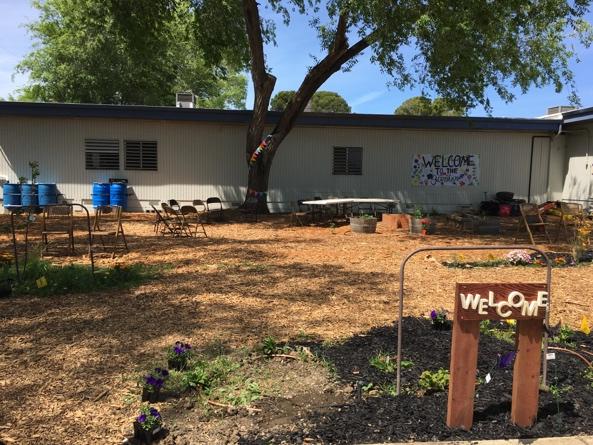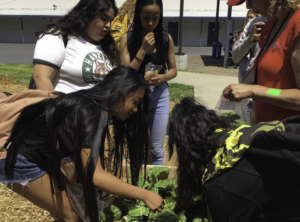Armijo High School

Project Activities
The Armijo High School garden installation had around 250 participants. These participants included English 10, English as a Second Language, IB Theory of Knowledge, Special Education and Art students. These numbers also include woodshop students who built raised beds for the garden, a few students who were passing by the garden on their way to their class and participated after school and Film and Video students who filmed parts of the installation, took pictures and created a video about the history of the garden. Other students also created one-minute videos about what the garden meant to them. Overall the installation took about a week and a half.
In order to choose fruits and vegetables that were relevant to their cultural background, students were asked to create a design of the garden with a list of what they would like to grow. These designs and lists were shared with us and when feasible served as a base for the garden design.
As an added bonus, and in an effort to make this garden as sustainable as possible, rain barrels were installed, as well as a swale, both for diverting roof water.
Results and Impact
The installation of Jardín de la Esperanza, or Garden of Hope, was exciting because of multiple opportunities to work with the students and teach them about the topic of permaculture and the overall design of the garden. Several meetings were held with the garden champion and The Get Fresh Crew, a core group of students who spearheaded the outreach of other students. They took leadership roles and created flyers, reached out to the teacher in charge of morning announcements and gave us insight into the kinds of challenges the garden would face.
IB’s Theory of Knowledge class was also inspired to participate and created a Native American fruit tree guild based on food-producing principles of Native Americans in Solano County. The garden in this case served as a hands-on opportunity to further engage on the subject.
Our champion was also connected with Public Health and has shared with her students some material about healthy eating. She also is continuously brainstorming ways of using the garden as an outdoor classroom. She is currently connecting with a tree service to get a log that can be transformed into outdoor seating for her students. She is also actively looking for funding to purchase tools and other materials she will need. She was awarded the 2019 Educational Plus Grant through the Solano Community Foundation.
Over the next five years this garden will create at least 713 pounds of food, which is about 594 meals.
Lessons Learned
School gardens need approval from several tiers of administration, including the school, district and the principal, and as such is a long wait process. The approval to begin breaking ground on this garden took a couple of months and required several calls and emails from both Sustainable Solano staff and the garden champion. A champion teacher who is passionate about gardening and about hands-on learning is a must. Those interested in having a garden would also benefit from creating a mock-up or a visual representation of what the garden can look like in order to entice the administration with a vision of all the possibilities.
Learn More
Read more about this project in the blog post below.

